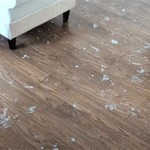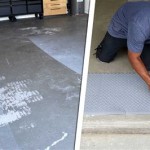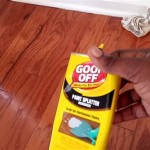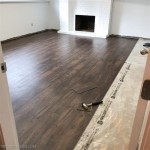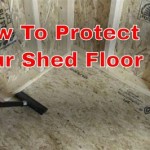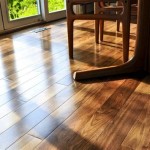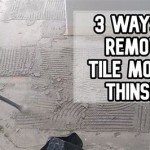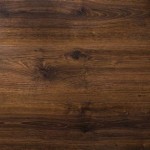How To Remove Adhesive Glue From Hardwood Floors
Removing adhesive glue from hardwood floors can be a challenging task, often encountered during renovations, carpet removals, or after accidental spills. The type of adhesive, the duration it has been adhered to the floor, and the finish of the hardwood all influence the appropriate removal method. Understanding these factors is crucial for achieving successful glue removal without causing damage to the underlying wood. This article provides a comprehensive guide on various techniques for safely and effectively removing adhesive glue from hardwood floors.
Before initiating any glue removal process, it is paramount to identify the type of adhesive present. Common adhesives found on hardwood floors include: construction adhesive, carpet adhesive, tile adhesive, and general-purpose glues. Construction adhesive is typically very strong and resilient, requiring more aggressive removal methods. Carpet and tile adhesives may be water-based or solvent-based, impacting the choice of cleaning agents. Identifying the adhesive type will allow for the selection of the most effective and appropriate removal strategy.
Preparation is key to minimize damage and ensure a smooth removal process. This involves gathering the necessary tools and materials, protecting the surrounding areas, and performing a test patch. Essential tools and materials include: plastic scrapers, putty knives, heat guns or hair dryers, mineral spirits or adhesive removers, clean cloths, safety glasses, gloves, and ventilation equipment. Protecting the surrounding areas involves covering nearby walls, furniture, or other flooring materials with drop cloths or plastic sheeting to prevent accidental damage or staining. Finally, a test patch should be performed in an inconspicuous area of the floor to determine the compatibility of the chosen removal method with the wood finish and to assess the potential for discoloration or damage.
Key Point 1: Mechanical Removal Techniques
Mechanical removal techniques involve physically scraping or chipping away the adhesive glue from the hardwood floor. These methods are often effective for removing thick layers of dried adhesive or for situations where solvents or heat-based treatments are not desirable. However, careful execution is essential to avoid scratching or gouging the wood surface.
The primary tools used in mechanical removal are plastic scrapers and putty knives. Plastic scrapers are preferred for initial removal as they are less likely to scratch the wood than metal scrapers. A sharp plastic scraper can effectively lift edges and remove larger pieces of dried adhesive. Putty knives, especially those with flexible blades, can be used for more stubborn areas or to remove adhesive from tight corners and edges. When using putty knives, it is important to maintain a shallow angle to the floor and apply even pressure to prevent digging into the wood.
The process typically involves gently scraping away the adhesive in small sections. Start with the edges of the adhesive deposit and gradually work inward. Applying gentle heat from a hair dryer can soften the adhesive slightly, making it easier to scrape off. Regularly inspect the scraper and putty knife for any buildup of adhesive, as this can reduce their effectiveness and increase the risk of scratching the floor. If the adhesive is particularly stubborn, consider using a specialized adhesive scraper designed for floor removal. These tools often have ergonomic handles and adjustable blades for increased leverage and control.
After removing the bulk of the adhesive, there may be residual glue or a sticky residue remaining on the floor. This can be addressed with fine-grit sandpaper or abrasive pads. Use light pressure and circular motions to gently buff away the residue. It is important to select a sandpaper grit that is appropriate for the type of wood and finish of the floor. Start with a higher grit (e.g., 220-grit) and gradually move to a finer grit (e.g., 320-grit) if necessary. After sanding, thoroughly clean the area with a soft cloth and wood cleaner to remove any dust or debris.
The use of power tools, such as orbital or rotary sanders, should be approached with caution and only considered by experienced individuals. Aggressive sanding can easily remove the finish and damage the wood fibers, requiring extensive repairs. If using power tools, always start with a low speed and light pressure, and continuously monitor the floor for any signs of damage.
Key Point 2: Heat-Based Removal Techniques
Heat-based removal techniques involve using heat to soften the adhesive, making it easier to scrape or peel off the hardwood floor. This method is particularly effective for removing certain types of adhesives, such as carpet adhesive and some types of construction adhesive. However, it is essential to use heat carefully to avoid damaging the wood finish or causing the adhesive to spread or become more difficult to remove.
The most common tools used in heat-based removal are heat guns and hair dryers. Heat guns produce a higher temperature than hair dryers and are more effective for softening stubborn adhesives. However, they also pose a greater risk of damaging the wood finish if used improperly. Hair dryers provide a gentler source of heat and are suitable for removing smaller areas of adhesive or for situations where the wood finish is delicate.
When using a heat gun, it is essential to set it to a low or medium setting and to keep it moving continuously over the adhesive. Avoid holding the heat gun in one spot for too long, as this can scorch the wood finish or cause the adhesive to melt excessively. Direct the heat at the edge of the adhesive deposit and gradually work inward. As the adhesive softens, use a plastic scraper or putty knife to gently lift and remove it.
With a hair dryer, the process is similar, but it may take longer to soften the adhesive. Hold the hair dryer a few inches away from the adhesive and move it back and forth in a sweeping motion. Periodically test the adhesive with a plastic scraper to see if it has softened sufficiently. Once the adhesive is pliable, carefully scrape it off the floor.
Regardless of the heat source used, it is important to monitor the wood finish for any signs of damage. If the finish starts to blister, crack, or discolor, immediately stop applying heat and allow the area to cool. Consider using a different removal method or consulting with a professional flooring contractor.
After removing the adhesive with heat, there may be a sticky residue remaining on the floor. This can be addressed with mineral spirits or a specialized adhesive remover. Apply a small amount of the solvent to a clean cloth and gently wipe the affected area. Be sure to test the solvent in an inconspicuous area first to ensure that it does not damage the wood finish. Allow the solvent to dwell for a few minutes to soften the residue, and then wipe it away with a clean cloth. Repeat as necessary until the floor is clean and dry.
Key Point 3: Solvent-Based Removal Techniques
Solvent-based removal techniques involve using chemical solvents to dissolve or loosen the adhesive glue from the hardwood floor. This method is often effective for removing stubborn adhesives that cannot be easily removed with mechanical or heat-based methods. However, it is crucial to use solvents carefully and to follow all safety precautions to avoid damaging the wood finish, creating hazardous fumes, or causing skin irritation.
The most common solvents used for adhesive removal include mineral spirits, acetone, and specialized adhesive removers. Mineral spirits are a relatively mild solvent that is effective for removing many types of adhesives. Acetone is a stronger solvent that can dissolve more stubborn adhesives, but it is also more likely to damage the wood finish. Specialized adhesive removers are formulated to be safe for use on hardwood floors and are often the best choice for removing specific types of adhesives, such as carpet adhesive or construction adhesive.
Before using any solvent, it is essential to read and understand the manufacturer's instructions and safety precautions. Always work in a well-ventilated area to avoid inhaling harmful fumes. Wear safety glasses and gloves to protect your eyes and skin. Avoid using solvents near open flames or sources of ignition.
To apply the solvent, dampen a clean cloth with a small amount of the solvent. Gently wipe the affected area, allowing the solvent to dwell for a few minutes to soften the adhesive. Avoid pouring the solvent directly onto the floor, as this can saturate the wood and damage the finish. Periodically test the adhesive with a plastic scraper or putty knife to see if it has softened sufficiently. Once the adhesive is pliable, carefully scrape it off the floor.
After removing the adhesive with solvent, thoroughly clean the area with a clean cloth and water to remove any solvent residue. Allow the floor to dry completely before applying any finish or sealant. If the solvent has damaged the wood finish, you may need to refinish the affected area to restore its appearance.
It is important to note that some adhesives may require multiple applications of solvent to be completely removed. In these cases, it is best to work in small sections and to allow the solvent to dwell for a longer period of time. If you are unsure about which solvent to use or how to apply it safely, consult with a professional flooring contractor. They can assess the type of adhesive and recommend the most effective and appropriate removal method.
In addition to the techniques described above, other methods can be employed depending on the specific situation. For example, citrus-based adhesive removers offer a more environmentally friendly alternative to harsher solvents. These products are derived from citrus fruits and are effective for removing many types of adhesives, while also being less toxic and less likely to damage the wood finish. However, they may require longer dwell times and more effort to remove stubborn adhesives.
Another option is to use a steam cleaner to soften the adhesive. The steam can penetrate the adhesive layer and loosen its bond with the hardwood floor. After steaming the area, use a plastic scraper or putty knife to remove the adhesive. This method is particularly effective for removing water-based adhesives.
Ultimately, the best approach for removing adhesive glue from hardwood floors will depend on the type of adhesive, the condition of the floor, and your level of experience. By carefully considering these factors and following the guidelines outlined in this article, it is possible to successfully remove adhesive glue without causing damage to the underlying wood.

Removing Glue Or Adhesive From Hardwood Floors The Speckled Goat

How To Remove Glue From Wood Floors Pete S

Removing Glue Or Adhesive From Hardwood Floors The Speckled Goat

4 Ways To Remove Adhesive From A Hardwood Floor Wikihow

Flooring How Can I Remove Carpet Adhesive From Hardwood Floors Home Improvement Stack Exchange

Removing Glue Residue From Hardwood Floors After Installer Left Like This

4 Ways To Remove Adhesive From A Hardwood Floor Wikihow

4 Ways To Remove Adhesive From A Hardwood Floor Wikihow

Removing Glue Or Adhesive From Hardwood Floors The Speckled Goat

4 Ways To Remove Adhesive From A Hardwood Floor Wikihow
See Also
